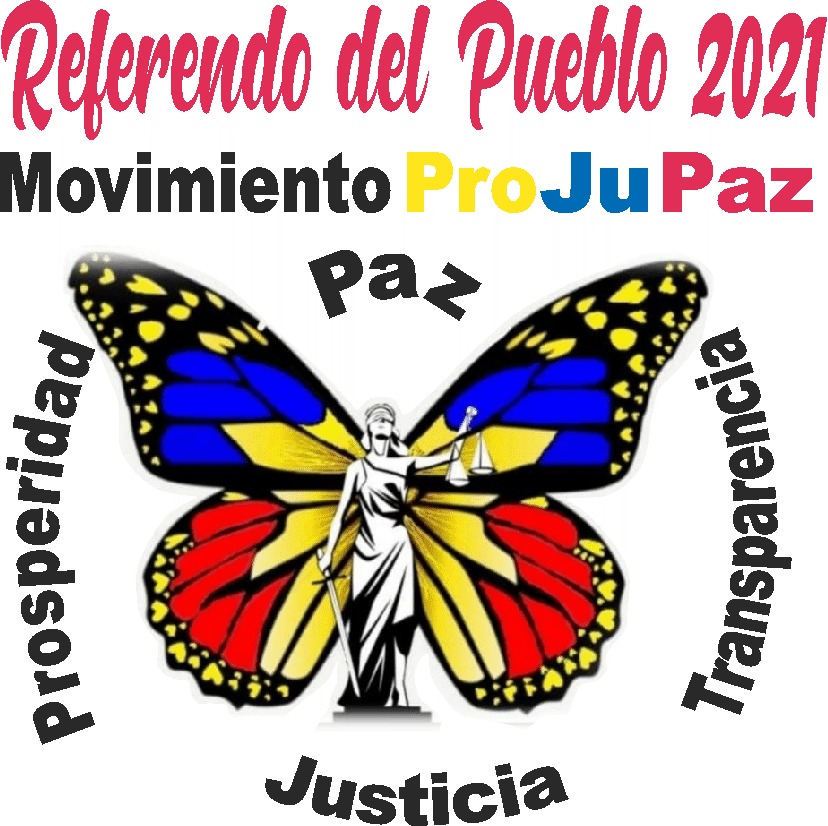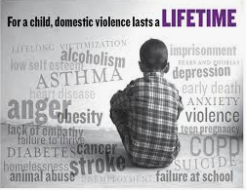
REVERSING THE VIOLENT & CORRUPTION CULTURES WILL BE A GAME CHANGER!

EDUCATION, pedagogy aims to reverse the additions of violence and corruption, in addition to the other critical aspect for change and is to reverse the self-hypnotization in which the majority of Colombians live from a reality full of suffering, violence, of poverty, of hunger, of injustice. To accomplish this we are going to use technology that has been used successfully for the last 8 years for instant referral around the world, we are very fortunate that this knowledge is available to us at this time in human history.
The program combines neuroscience, epigenetics, neuroplasticity, endocrinology, psychoneuroimmunology, and quantum physics. We are going to wake up that 90% of Colombians anesthetized in pain, we are going to create the reality that the Colombian people deserve! Let’s hypnotize ourselves of a life of prosperity, abundance, transparency, of peace!
This Program is Avalibale upon Request
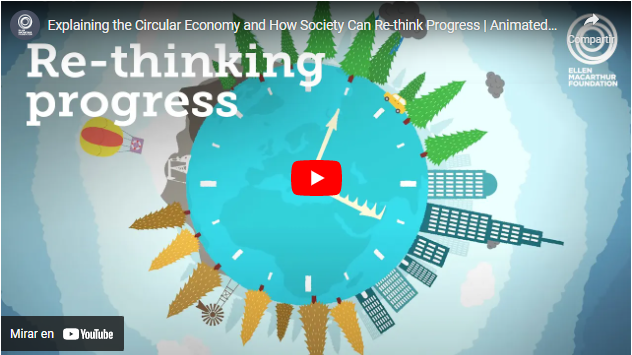
CIRCULAR ECONOMY TARGETS ZERO WASTE & POLLUTION USING MATERIALS LIFECYCLES
“Circular Economy is an economic system that targets zero waste and pollution throughout materials lifecycles, from environment extraction to industrial transformation, and final consumers, applying to all involved ecosystems. Upon its lifetime end, materials return to either an industrial process or, in the case of a treated organic residual, safely back to the environment as in a natural regenerating cycle.
It operates by creating value at the macro, meso and micro levels and exploits to the fullest the sustainability nested concept. Used energy sources are clean and renewable. Resources use and consumption is efficient. Government agencies and responsible consumers play an active role ensuring correct system long-term operation.”
circular development is a model of economic
More generally, circular development is a model of economic, social and environmental production and consumption that aims to build an autonomous and sustainable society in tune with the issue of environmental resources.[17] The circular economy aims to transform our economy into one that is regenerative. An economy that innovates to reduce waste and the ecological and environmental impact of industries prior to happening rather than waiting to address the consequences of these issues.[18] This is done by designing new processes and solutions for the optimization of resources, decoupling reliance on finite resources.[17]
The circular economy is a framework of three principles, driven by design: eliminate waste and pollution, keeping products and materials in use and regenerate natural systems.[4] It is based increasingly on renewable energy and materials, and it is accelerated by digital innovation. It is a resilient, distributed, diverse, and inclusive economic model. The circular economy is an economic concept often linked to sustainable development, provision of the Sustainable Development Goals (Global Development Goals) and an extension of a green economy.
The Reforms Proposed by the ProJuPaz Foundation and the Plan Salida Social Movement
Our strategy to generate “unprecedented change” at the human-environmental level will be a National Program designed to activate the switch of conscience and build ethical beings with love for the environment, creating strategies such as the program “YOUR GARBAGE CREATES MONEY AND VIDA” focused on the idea that “waste is resources” and which will have as its objectives: sustainable waste management, greenhouse gas (GHG) reductions, separation of biodegradable, recyclable and organic waste at source , environmental education campaigns, a system of fines, incentives and volunteering, which will finally be the fundamental axes of the program at the national level.
The use of “garbage as energy” will be used -which will provide the necessary electricity to the regions-, door-to-door collection and various environmental education programs, which will simultaneously bring millions of “green jobs” and the economic benefits that They will be estimated at hundreds of billions of dollars, in addition to the production of thousands of tons of biofertilizers and compost destined to strengthen the vision of “Colombia as a world agricultural power” that will turn it into a true green country.
Ana Inés Vásquez is the president of the Community Action Board of the GIFT neighborhood in Bosa and a member of the National Interethnic Network of Environmental Defenders and has become a manager of cultural change. From her town, Bosa, she has developed a community initiative of urban gardens that have provided food security to the residents of the neighborhood.
We are going to have the opportunity to understand how the process was to generate these spaces and to know what is the importance of involving boys and girls in this type of initiative, since Ana Inés found in the construction of urban gardens on the terraces of the neighborhood an alternative to the boredom experienced by boys and girls in the confinement of the pandemic.
We are working the Circular Economy Proyect using the model that the neighborhood, “The GIFT” worked with integral recycle and the head of household women, made to emphazice on, HOW TO WORK WHITH WHAT WE HAVE and that means our organic waste, our little spaces as long as we are using OUR CONSCIONESS TO MAKE THE DIFFERENCE.
More on information to be send upon request.

AGRO-ECOTOURISM, RISE AWARENESS & RESPECTFUL MINDSET!

Agri-ecotourism or agro-ecotourism is a mix of both ecotourism and agritourism. It’s a form of tourism that involves visitors participating in sustainable farming and learning about local produce. Known to be socially responsible and eco-friendly, the popularity of agri-ecotourism continues to grow as people look for new experiences outside of cities.
Whether it’s for leisure, education, or just curiosity, agri-ecotourism has managed to attract both international and domestic tourists. Driven by the need for more sustainable solutions and pastimes, this blend of interests has the potential to continue expanding in the future
Difference between Agritourism and Ecotourism
Agritourism brings tourists to a farm or ranch to teach them about the local culture and increase income while ecotourism promotes sustainable and responsible travel to areas with the intention of conserving and protecting the environment. Ecotourism, also known as nature tourism, tends to be more focused on raising awareness for environmental issues. Both of these forms of tourism also work towards supporting the local community and encouraging a respectful mindset.
The combination of the two results in agri-ecotourism, a new and durable approach to tourism
Why Do We Need Agri-Ecotourism?
There are many types of tourism that you may have heard of or even experienced first hand. Culinary tourism, business tourism, sports tourism, and even medical tourism – you name it. What makes agri-ecotourism stand out is that it is heavily focused on protecting the environment and reducing our carbon footprint while still providing an enjoyable holiday.
For guests, agri-ecotourism is an escape from busy city life. It gives them the opportunity to be surrounded by nature and immerse themselves in a new culture. Not only does this provide endless activities for travelers, but it also supports local farmers.
Agri-ecotourism can provide jobs in areas that normally have high levels of poverty, improve the food supply chain, strengthen traditional farming practices, and promote the local heritage through art.
Furthermore, it’s a great cause to promote because it works on conserving natural habitats and increasing landscape diversity. Because agri-ecotourism teaches people to be more responsible when it comes to their consumption habits, this change in mindset can be transformative for our society.
Agri-Ecotourism Activities for Guests
Agri-ecotourism is a lot more than just learning about the farming process. There’s an abundance of invigorating and memorable activities that guests can participate in when visiting eco-friendly farms. The best part is that it provides something interesting for all age groups.
If you own a vacation rental farmhouse, here’s a list of agri-ecotourism related activities that you can promote to your guests:
- Meeting local farmers
- Tasting a variety of fresh foods and produce
- Learning about rural art
- Farmer’s markets
- Visiting nearby protected areas and learning about their history
- Going on educational tours for a multitude of topics
- Milking cattle
- Winery tours
- Attending local festivals and fairs
- Renting out farmhouses or rural B&Bs to live out the full experience
- Workshops for corn grinding or traditional milk processing
- Learning about local architecture and construction
CREAR UNA ORGANIZACIÓN SOMBRILLA NACIONAL
DE TODAS LAS ORGANIZACIONES QUE REPRESENTAN LOS DESPLAZADOS Y VICTIMAS DEL CONFLICTO ARMADO DE COLOMBIA
El Problema
Las estadísticas oficiales consideran que hay en el país entre 6 y 8 millones de víctimas causadas por el conflicto armado, desafortunadamente vigente, a pesar del Acuerdo de Paz firmado entre las Farc y el gobierno del presidente Santos y las desmovilizaciones de las organizaciones paramilitares bajo el gobierno de Álvaro Uribe Vélez. Se instituyó – de tiempo atrás- una violación sistemática al Derecho Internacional Humanitario y a las normas internacionales de Derechos Humanos, donde los “homicidios, masacres, secuestros, desapariciones forzadas, torturas, delitos contra la libertad e integridad sexual en el marco del conflicto, incidentes y accidentes por minas antipersonales (MAP), munición sin explotar (MUSE) y artefacto explosivo improvisado (AEI), amenazas, actos terroristas, combates, enfrentamientos y hostigamientos, reclutamiento y utilización de niños, niñas y adolescentes, desplazamiento forzado y despojo o abandono forzado de tierras” estuvieron durante décadas en el orden del día. (Información Institucional)
Las organizaciones de víctima son marginales en los territorios y la solidaridad se distribuye con mezquindad en calidad y cantidad. A la par, estas organizaciones y sus integrantes sienten, un grado tal de indiferencia de la sociedad mayor, lo que plantea de entrada la búsqueda de una estrategia que posibilite un mejor acercamiento entre la población asentada de tiempo atrás y quienes han sido desplazados por las violencias especialmente de los campos. Algo así como convertir los espacios y sus pobladores en Territorios de Paz. Desafortunadamente las victimas en su necesidad y desesperacion se pegan a la cola de los carros politiqueros mendigando apoyo. El otro aspecto critico es su baja capacidad política para transformar la realidad derivada del desconocimiento misional de las entidades territoriales. Desarrollando como concequencia una baja capacidad de negociación a la hora de dirimir sus propuestas ante la administración y frente a otros actores sociales y políticos.
La Oferta Pública.
Esta alarmante situación presionó al Estado a construir políticas publicas para atender a las personas y familias víctimas de las atrocidades señaladas, “incluyendo aquellas que pertenecen a grupos de especial protección constitucional como los grupos étnicos; las mujeres; los niños, niñas y adolescentes; las personas mayores; las personas con orientación sexual e identidad de género no hegemónica, y las personas con discapacidad o con habilidades diversas”.
El Estado diseñó una política de intervención directa integral-con Justicia Transicional- para restituir derechos y garantizar el goce de los mismos, ya fueren individual o colectivamente mediante la Ley 1448 de 2011 y los decretos Ley 4633, 4634 y 4635 de 2011, el decreto 4634 y demás normas complementarias y reglamentarias dotando a la política pública de un sistema (SNARIV) al tiempo que definía instancias de la institucionalidad de víctima (Comités territoriales de Justicia Transicional, Mesas de Víctimas, Subcomités Temáticos y/o Mesas de Restitución).
Las Entidades Territoriales cumplen singular papel en la política pública de víctimas, como quiera que, directamente, afrontan el problema, especialmente el del desplazamiento forzoso que impacta el normal desenvolvimiento de la vida comunitaria en dichas entidades territoriales. La política pública las involucra en soluciones sociales dentro de sus competencias misionales, de acuerdo con sus presupuestos, pero también en aquellas determinadas por las leyes sobre el caso.
Los propósitos
Instrumentos del ejercicio de la soberanía.
- Es en las entidades territoriales donde se encuentra el Estado con las comunidades; por lo tanto, contribuir al aumento de la capacidad política de las víctimas, restableciendo a la vez sus derechos políticos de participación en la conformación de los poderes públicos territoriales, en su control, anudado a las iniciativas legislativas y normativas, consultas populares, referendos aprobatorios y derogatorios y revocatoria de mandato. Es garantía para el logro y disfrutes de los derechos conculcados por las violencias cruzadas en los territorios apelar a la democracia participativa y representativa.
Las víctimas y los planes de desarrollo Territoriales. - Se entiende que los espacios para ello están dados en la formulación colectiva de los planes de desarrollos de las entidades territoriales que deben obligatoriamente contener este componente, permitir orientar recursos públicos del sistema general de participaciones y del sistema general de regalías.
Las víctimas en los Consejos Territoriales de Planeación. Gestores y Veedores Ciudadanos.
- En esta dirección, es de singular importancia la vinculación de sus organizaciones a los consejos territoriales de planeación para el seguimiento al componente de Victimas incluido en el Plan de Desarrollo Territorial, que hagan presencia en las rendiciones de cuenta de los alcaldes y gobernadores, e integren los diferentes comités de veedurías ciudadanas, lo cual no irá en detrimento del papel que les corresponde jugar prioritariamente en los planes de desarrollo con enfoque territorial (PDET)
El encuentro, con seguridad, podría definir un conjunto de acciones en tal sentido lo cual contaría, de antemano, con nuestra decidida participación.
Nota 1: El encuentro, con seguridad, podría definir un conjunto de acciones que abraque lo aquí anunciado, las cual contarían, de antemano, con nuestra decidida participación.
Nota 2: A manera de reflexión síntesis, se podría ponderar los esfuerzos del Estado en los compromisos adquiridos, no exentos, sin duda, de limitaciones económicas, de falta de apoyo real de las entidades territoriales, tanto de sus administraciones como de la población territorial en su conjunto, que poco está sensibilizada con respecto a las causas de desplazamiento forzoso y las víctimas de la violencia, sobre todo de la necesidad de apoyarlas en su incesante viacrucis y caminar por las distintas regiones del país.
Propuesta de Agenda
Primer día
Instalación
- Himno Nacional
- Intervención del delegado de la Unidad de Víctimas.
- Intervención del delegado de la Mesa de Víctimas.
- Presentación de los asistentes.
- Conferencia: Capital Político de las Victima como forma de alcanzar las metas de la política pública.
Segundo día
-DEBATE
-Conclusiones Generales y particulares
Reforma Agraria Autosostenible
Ejes de la reforma agraria en: 1. Recuperación y administración de tierras; 2. Eliminar la pobreza del 60% de los colombianos; 3. La educación, investigación y asistencia técnica para potenciar el desarrollo rural; 4. Construcción de las diferentes modalidades de transporte – vías ferroviarias, vías primarias, secundarias, terciarias-; 5. Construcción de centros de acopio refrigerados en todas las regiones; 6. Creación de energías renovables; 7. Administración del recurso humano a través de organizaciones de economía solidaria; 8. Construcción de Villas Agropecuarias con vivienda digna con entorno saludable para las comunidades vulnerables; 9. Financiación, créditos y subsidios; 10. Infraestructura y manejo de aguas; 11. Desarrollo rural y económico para un agro altamente eficiente, rentable y competitivo ( Agricultura; Piscicultura; Ganadería) mas….
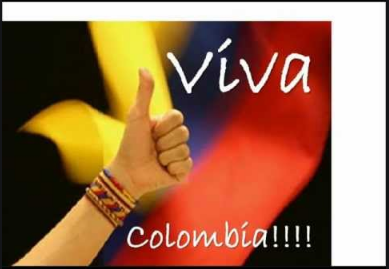
Como se va hacer la INCLUSIÓN?
No puede llamase un REFERENDO DEL PUEBLO SI NO HAY INCLUSION DE ABSOLUTAMENTE TODOS LOS COLOMBIANOS! Para hacer la inclusión de todos los colombianos estamos invitando a todos los campesinos, a los indigenas, a todos los desplazados y victimas del conflicto armado, a los ciudadanos de a pie, a todas universidades de Colombia, a los maestros y todas las filiales de FEDECOL, a todas las organizaciones de trabajadores de Colombia, a los empresarios competitivos, productivos, forjadores de desarrollo, a la iglesia, la base de la sociedad forjadora que tengan la oportunidad de participar en este esfuerzo colectivo. Sus propuestas van siendo incluidas en este link para que con un equipo de Constitucionalistas convirtamos estas propuestas en artículos legales con lenguaje jurídico aceptado por la Registraduría Nacional.
En Febrero 1 del 2021 entramos el formato del Referendo, en 6 meses, recolectamos los apoyos o firmas. En Julio 30 le entragamos los 1 Millon 800 firmas a la registraduria, pero ya tendremos listos mas de 3 millones de formularions firmados en caso de que la registraduria haga lo que ya esta acostumbrada ha hacer. Convocamos el REFERENDO para septiembre 19, 2021 para que el PUEBLO UNIDO VOTE POR EL REFERENDO DEL PUEBLO, y en Marzo 2021 registramos las 16,000 sillas que ganaremos en may 2022 ( en alianza con gente con CONSCIENCIA de todos los otros partidos). Sillas que vamos a necesitar para MATERIALIZAR nuestra VISIÓN. Aquí solo ocurre la MAGIA del PUEBLO UNIDO, y su deseo de cambiar a COLOMBIA. ¡Esos dos días como HORMIGAS Y SIN RUIDO vamos ha hacer nuestras MARCHAS A las URNAS 15 millones de votos para demostrarle a COLOMBIA como es que se MATERIALIZA CON CONTUNDENCIA UN SUEÑO! Y allí solo comienza el verdadero trabajo!
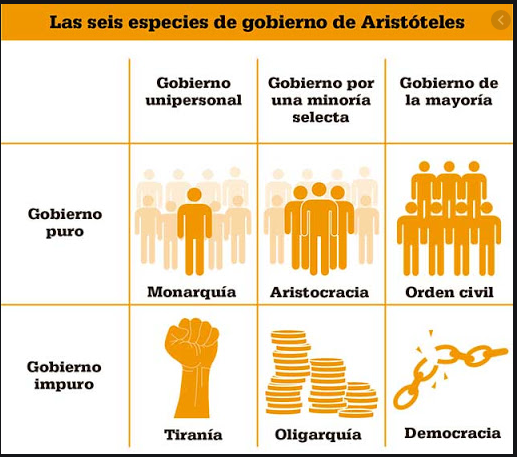
Porque Las Democracias No Funcionan?
Como vamos a ver las democracias no funcionan porque tenemos que hacer un trabajo SUPER HUMANO para que estas SI funcionen y con el objetivo con el que nacieron, que es LA REPRESENTACION DEMOCRATICA DEL PUEBLO. Para que la democracia en Colombia trabaje tenemos que HACER CAMBIOS SIN PRECEDENTES Y ESO ES LO QUE VAMOS A LOGRAR con EL PLAN SALIDA!:
1. LOS DEFECTOS DEL HUMANOS DEL ALMA:
Avaricia, Egoísmo, Ambición por el Poder, Falta de Compasión, Falta de Empatía, Envidia, codicia, y el ego se convierten en la gasolina del alma que empuja los motivos de los lideres políticos
2. LA POLUCION CULTURAL

Desde la niñez tenemos un aprendizaje contaminado con información equivocada QUE HASTA NUESTRA HISTORIA NO LA ROBAN O LA MODIFICAN, continuamos con esa misma película o información equivocada que está siendo pre- pagada por los poderosos – la Elite para afectar nuestra información, nuestro pensamiento. De otro lado del pueblo NO ES CONSCIENTE que su pensamiento HA SIDO contaminado, que HAN SIDO INTENCIONALMENTE CONTAMINADOS CON UN OBJETIVO especifico POLITICO o FINANCIERO . EL PUEBLO CASI NUNCA SE ENTERA QUE HAN SIDO ROBADOS O QUE ESTÁN SIENDO ABUSADOS, por los PODEROSOS de la élite. el PUEBLO nunca sabe quién fue el que los ROBO a menos que haya conciencia de que esto está sucediendo, CONCIENCIA DE CUALES MEDIOS DE COMUNICACIÓN Y QUIENES ESTÁN detrás creando esta MANIPULACION.
Colombia, es uno de los países con mayor concentración mediática y dependencia a grupos empresarios y élites políticas; Organización Luis Carlos Sarmiento Angulo (El tiempo, City TV), Organización Ardila Lule ( RCN, NTN24), el Grupo Santo Domingo (Caracol TV, El Espectador, Cromos, radio Blu) Felipe López Caballero (Revista semana y Dinero) y el grupo español Prisa, propietario de Radio Caracol. Es explícito en la ley TIC 152 del 2018 liquidar ANTV (Autoridad Nacional de Televisión) cuya función tiene la ejecución de programas y prestación de servicio público de televisión y garantizar pluralismo informativo. Si bien, hace parte de la institucionalidad del Estado, su eliminación permite un filtro menos en la concentración mediática, pues le abre paso a que sea el poder ejecutivo el que plantea funciones y contenidos para los intereses del Gobierno de turno. Esta tragedia es la señal mas grave contra la democracia y la consolidación de una dictadura porque los medios de comunicación pretenden tomar la vocería del ciudadano, de las víctimas de los falsos positivos, de los desplazados, de los más vulnerables. “El que no conoce la verdad es simplemente un ignorante, pero el que la conoce y la llama mentira, ese es un criminal!” Bertolt Brecht
3. EL PATRON BIOLOGICO FIJO DE LA MENTE:

Al aprender el cerebro forma nuevas conexiones y la memoria sostiene esas conexiones. Ahora si observas como opera el cerebro los mismos pensamientos te llevan a las mismas decisiones, las mismas decisiones te llevan al mismo comportamiento. El mismo comportamiento te lleva a las mismas experiencias produciendo las mismas emociones. Estas mismas emociones te llevan a los mismos pensamientos. Un círculo vicioso no solo de los líderes corruptos, o de los sociópatas robando y abusando, pero del pueblo porque todos somos humanos con una MENTE que si no es entrenada es IMPERFECTA. Debemos ser conscientes de estos defectos en el cerebro humano y no dejar que las personas con años y años de malos hábitos sean los que nos gobiernen porque ni ellos mismo pueden contener sus propias debilidades, sus propios defectos. imaginen a una persona que aprendió a matar para tener poder, para atemorizar, para intimidar a la población? ¿Piensa por un segundo los gobernantes que lo mejor que han hecho es buscar las formas descaradas de robar al pueblo? Pasan de una posición a otra perfeccionando el robo.
4. LA NATURALEZA HUMANA
los humanos nacimos con una naturaleza y no podemos evitarlo, pero ser esa naturaleza. Y allí encuentras naturalezas que no lo pueden evitar que su DNA tenga un deseo por dinero y poder y que esa sea la gasolina de su alma. Nunca sucede que ellos estén cocientes y controlen esa naturaleza. Al contrario, ellos llegan a estas posiciones de poder y se perpetúan allí robando. A menos que los descubramos y no dejemos que esas personas con esa naturaleza sea parte de quien nos gobierne. De otro lado las personas que tienen esa naturaleza de ayudar a la humanidad con frecuencia se encentran en circunstancias en que ellas se han levantado a hacer lo correcto y terminan perseguidas o destituidas por el bullying del corrupto. ¿Como crees que estas personas con naturaleza ambiciosa y corrupta algún día pueda admitir o arrepentirse de lo que hace? nunca! a menos que lo lleven a la cárcel y los juzguen. Por eso tenemos que observar la naturaleza del Gobernante antes de dejarlo llegar allí.
5. TODAS LAS ACCIONES TIENEN UN FIN

Según Aristóteles; “TODAS LAS ACCIONES TIENEN UN FIN” detrás de esta conclusión de Aristóteles están los defectos humanos de los puntos 1, 3 y 4 que acabamos de ver. Piensa en el Señor Angulo; Toda su vida a girado en el fin de conseguir dinero. Ese es su habito eso es lo que hay en su DNA. Entonces si vamos a escoger candidatos tenemos que mirar que es lo que han hecho toda la vida. Sus hábitos por esos hábitos nos van a llevar a sus Naturaleza, a su DNA. SI eres un ser bueno y justo tendrás que realizar actos buenos y justos creando así un habito. La VIRTUD; Requiere la justa proporción entre dos excesos. Exceso de acumular dinero, exceso de acumular poder. Virtudes de la razón: ciencia, Arte, Prudencia y Sabiduría por encima del ser humano.: LA CONTEMPLACIÓN.
6. SI, TAN SOLO PUDIÉRAMOS HABLAR !
En el corazón de la DEMOCRACIA estamos NOSOTROS EL PUEBLO, pero la CULTURA de los DIOSES y las redes sociales han DIVIDIDO el pueblo. Porque los medios de comunicación han POLARIZADO al mundo. Tan pronto alguien es identificado con alguien la otra parte del país entonces ya NO escucha.
7. CORRUPCIÓN

¿En todas las democracias del mundo hay corrupción, entonces como la democracia representa el pueblo? LA ÉLITE vs EL PUEBLO. La DEMOCRACIA REPRESENTA la ELITE, pero NO el PUEBLO. La ELITE efectivamente nomina los CANDIDATOS y el pueblo luego sin darse cuenta ELIGE esos CANDIDATOS que ESCOGIÓ LA ÉLITE. El modelo es llamado TWEEDIST y viene del señor Boss Tweed quien creo este concepto en el siglo 19 quien dice “A mí no me importa QUIEN hace la ELECCIÓN si YO HAGO LA NOMINACION”. El pueblo vota en las elecciones por los nominados que los grupos financieros o la élite escogió previamente. De esta manera nuestra democracia NO representa al PUEBLO.
Representa los “FINANCIEROS” la Élite. El ingenio en el robo de Boss Tweed está en mantenerse enfocado de que las campanas sean apoyadas financieramente en privado y que el apoyo financiero es EN SI MISMO UNA COMPETENCIA DE QUIEN DA MAS DINERO. Los deseos de la élite y de los grupos de intereses especiales son los intereses que se convirtieron en LEY, mientras que los deseos o intereses del PUEBLO nunca se ejecutan. QUE EL APOYO FINANCIERO TIENE SUS PROPIAS “ELECCIONES PRIMARIAS”. Este habito se vuelve una forma de vida en el Congreso. Las democracias son sensibles a los “FINANCIADORES” so el objetivo es hacer ilegal que ellos existan. ¿DEBEMOS INTERROGAR Y SABER QUIENES SON LOS ‘FINANCIEROS”? No hay control de nuestra democracia. El concepto de Tweed es el problema. Tenemos que hacer ilegal el Tweedism o la nominación del elegido.
8. LA DEMAGOGIA

Independiente del detalle, las consecuencias por la corrupción alrededor del mundo son las mismas: Ausencia de votos porque nadie ya cree en las democracias, dándole paso al POPULISMO. Gente representados banderas de la IZQ o de la DER consientes de la DEMAGOGIA. Empleo de halagos, falsas promesas que son populares pero difíciles de cumplir y otros procedimientos similares para convencer al pueblo y convertirlo en instrumento de la propia ambición política. LA DEMAGOGIA es una estrategia utilizada para conseguir el poder político que consiste en apelar a prejuicios, emociones, miedos y esperanzas del público para ganar apoyo popular, frecuentemente mediante el uso de la retórica, la desinformación, la propaganda política y la agnotología (es el estudio de la ignorancia o duda culturalmente inducida especialmente en la publicación de datos erróneos y tendenciosos).
La demagogia según Platón y Aristóteles, puede producir (como crisis extrema de la República), la instauración de un régimen autoritario oligárquico o tiránico, que más frecuentemente nace de la práctica demagógica que ha eliminado así a toda oposición (nuestro presente en Colombia). En estas condiciones, los demagogos, arrogándose el derecho de interpretar los intereses de las masas como intérpretes de toda la nación, confiscan todo el poder y la representación del pueblo e instauran una tiranía o dictadura personal. En sentido contrario y paradójicamente, muy habitualmente, las dictaduras se han instalado sosteniendo que lo hacían para terminar con la demagogia. y el recurso sistemático a polarizaciones absolutas (bien-mal, desarrollo-atraso, honestidad-corrupción), o conceptos imprecisos (“la alegría”, “la seguridad”, “la justicia”, “la paz”). creando un sentimiento que las DEMOCRACIAS son una MENTIRA.
9. EL POPULISMO DIGITAL
Que es diferente porque viene de la frustración de estos Gobiernos corruptos y la Elite. Nadie elige los líderes populares de una plataforma en las redes sociales. Los poderosos emergen de un proceso natural de consenso creando movimientos para el cambio. Son muchos y emergen donde hay injusticias y se convierten en algo poderoso. y crecen dentro de sí mismos con ideas que nos mueven y el potencial es poderoso. El liderazgo político en la era de populismo digital es PENSAR DIFERENTE y ellos tiene que sobrepasar la ira del pueblo y sus líderes deben encontrar el camino para que el PUEBLO REGRESE A UNA VERDADERA DEMOCRACIA. Tenemos que estar alerta y poner atención a los EGOS de estos nuevos líderes y su responsabilidad de no hacer demagogia dividiendo el pueblo para tener mas “likes”
10. LOS TRANTORNOS MENTALES, LA NUEVA OLA DE SOCIOPATAS QUE ESTAN GOBERNANDO EL MUNDO

La Elite mundial ha planeado por anos la forma de incrustarse en todos los medios de comunicación y organismos que controlan el mundo cono las Naciones Unidas, la OMS y las agencias de locales de Gobiernos como el INVIMA para cometer un genocidio mundial y tomar control de las mentes de la humanidad. Estos sociópatas no han mostrado ningún remordimiento de ver morir miles de personas en el mundo con el premeditado virus. O Los autores intelectuales y causantes de las masacres de Colombia no han mostrado ningún remordimiento por los ríos de gente inocente. No solo a este nivel, pero los ladrones de cuello blanco que en esta pandemia han saqueado a Colombia sin ningún remordimiento o empatía por el dolor de la gente humilde de Colombia que está atrapada muriendo de hambre por las circunstancias que el mismo gobierno sin conciencia ha implantado siguiendo las órdenes de la elite mundial.
Los “psicópatas exitosos” son personas muy exitosas, a menudo despiadadas, insensibles y superficialmente encantadoras, con poco o ningún respeto por los sentimientos o las necesidades de los demás. Estas afecciones de SALUD MENTAL SON EN MUCHOS CASOS COMPORTAMIENTOS IMITADOS, APRENDIDOS. Ellos tienden a realizar crímenes premeditados con riesgos calculados. O pueden manipular a otra persona para que infrinja la ley, mientras se mantienen seguros a distancia. Son maestros manipuladores de los sentimientos de otras personas, pero no son capaces de experimentar las emociones por sí mismos. ¿Qué los diferencia? Los psicópatas y los sociópatas comparten una serie de características, incluida la falta de remordimiento o empatía por los demás, la falta de culpa o la capacidad de asumir la responsabilidad de sus acciones, el desprecio por las leyes o las convenciones sociales y la inclinación a la violencia. Una característica central de ambos es una naturaleza engañosa y manipuladora.
Pero ¿cómo podemos distinguirlos? Los sociópatas son generalmente menos estables emocionalmente y altamente impulsivos; su comportamiento tiende a ser más errático que el de los psicópatas. Al cometer crímenes, ya sean violentos o no violentos, los sociópatas actuarán más por compulsión. Y les faltará paciencia, cederán mucho más fácilmente a la impulsividad y carecerán de una planificación detallada. Los psicópatas, por otro lado, planearán sus crímenes hasta el más mínimo detalle, tomando riesgos calculados para evitar la detección. Los inteligentes dejarán pocas pistas que puedan conducir a ser atrapados. Los psicópatas no se dejan llevar por el momento y, como resultado, cometen menos errores. Existe un vínculo particularmente interesante entre los asesinos en serie y los psicópatas o sociópatas, Pero la Oficina Federal de Investigaciones (FBI) de Estados Unidos ha notado ciertos rasgos compartidos entre los asesinos en serie conocidos. Estos incluyen el comportamiento depredador (por ejemplo, Ivan Milat, quien cazó y asesinó a sus siete víctimas); búsqueda de sensaciones (asesinos hedonistas que asesinan por entusiasmo o excitación, como Thomas Hemming, de 21 años, quien, en 2014, asesinó a dos personas solo para saber lo que se siente al matar); falta de remordimiento; impulsividad y la necesidad de control o poder sobre otros

SOLUCION: “PLAN SALIDA”
Parte de esta estrategia es el REFERENDO, pero conscientes que esto no es suficiente para transformar a Colombia hemos diseñado un PLAN SALIDA con 4 fases que incluye Fase 1: hacer la Consciencia, la pedagogia de porque las democracias no funcionan. Fase 2: El referendo que permite cambiar las leyes que hacen LEGAL la injusticia, la corrupcion, la violencia, etc. Fase 3: “Resetear a Colombia” en el art 19 de la propuesta incluimos en Marzo 2021 registramos las 16,000 sillas que si todo va como planeado la ganeremos 2022 (projupaz en alianza con (en alianza con gente con CONSCIENCIA de todos los otros partidos) Sillas que vamos a necesitar para MATERIALIZAR nuestra VISION. Sin esta nueva sangre es haria muy dificil tratar de cambiar a Colombia.
Fase 4: la mas critica y es COMO REALMENTE CREAMOS UN CAMBIO DURADERO? No hay forma de que la red neurológica del cerebro cambie mediante la firma de un acuerdo de paz. Vamos a usar tecnología que se ha utilizado con éxito en los últimos 8 años para la remisión instantánea en todo el mundo, somos muy afortunados de que este conocimiento esté disponible para nosotros en este momento de la historia humana. El programa combina neurociencia, epigenética, neuro plasticidad, endocrinóloga, psiconeuroinmunología y física cuántica. Combinaremos los conceptos con experiencias reales para enseñar al CUERPO a CONVERTIRSE en CEREBRO. Fase 5: Convertir a Colombia en uno de los mejores países del mundo en 15 años!
